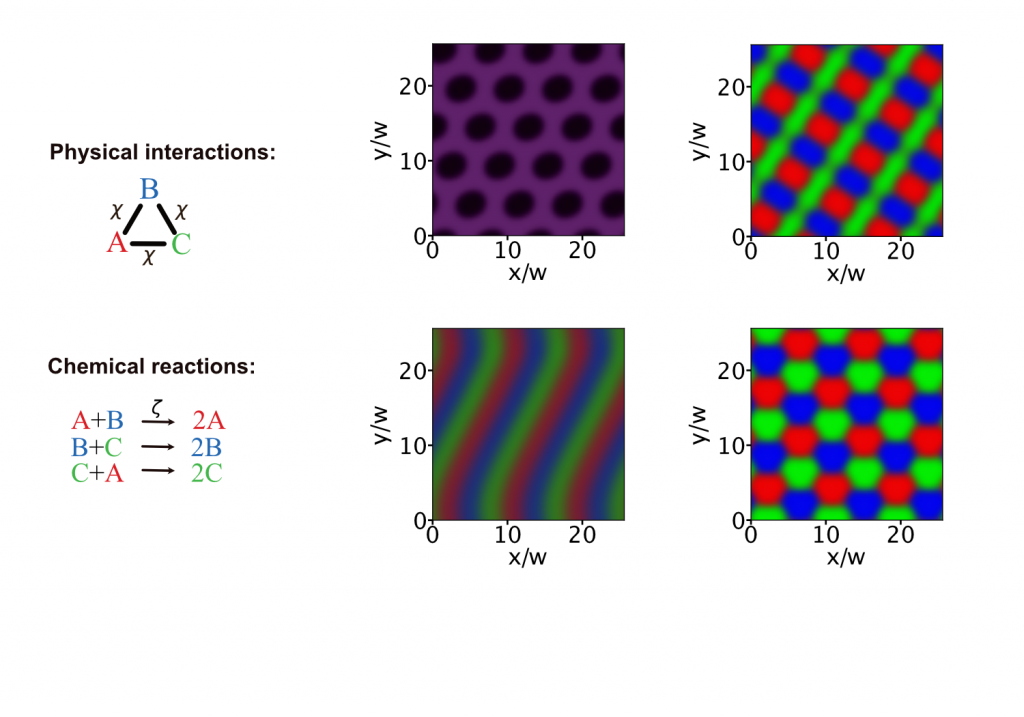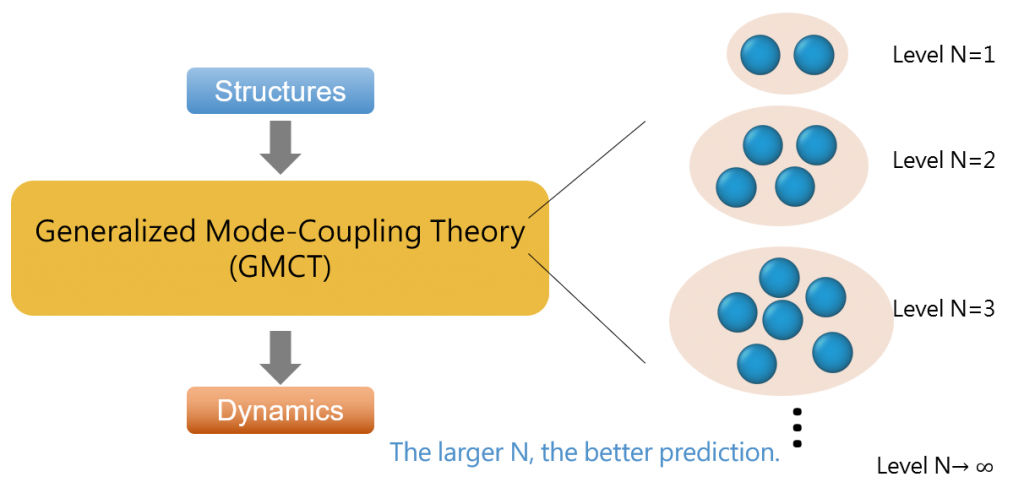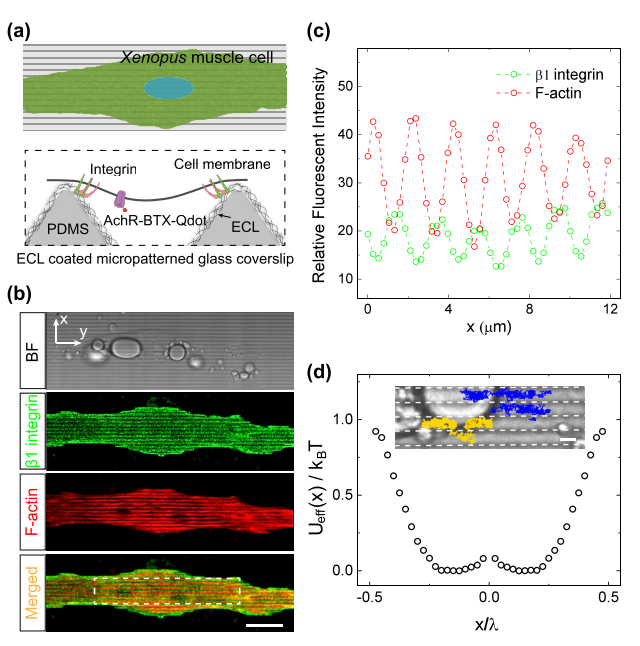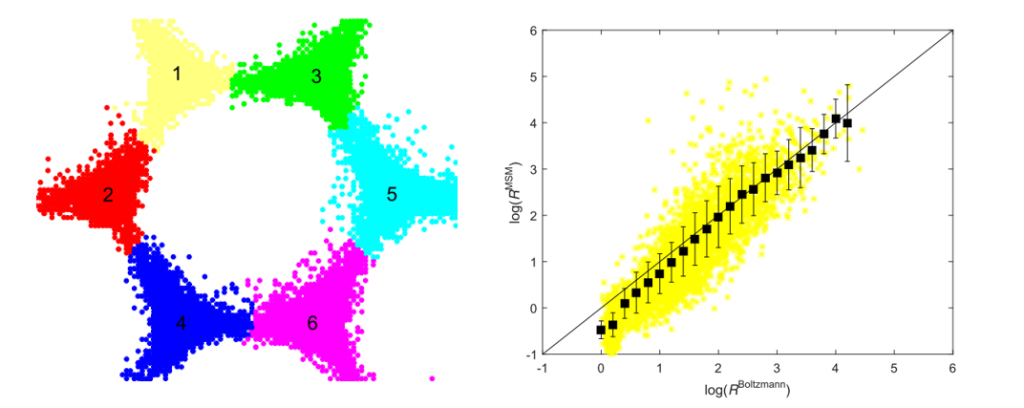Phase separation
Liquid-liquid phase separation plays significant roles in forming biomolecular condensates in living cells. We want to understand how the condensates form from and coexist in cytoplasm, a such complex active multicomponent system. Generally, both physical interactions and chemical reactions are important. We use field theory and simulations to understand how they control the dynamical process of condensation. More

Glass transition
Almost any material can be cooled or compressed from the liquid to the glass state. During this process, the relaxation dynamics slows down dramatically, while the disordered microstructure undergoes only small changes. This apparent disconnect between structure and dynamics underlies much of the complexity of the glass transition. We aim to understand this by developing a first-principles theory that connects the dynamics with the static structures. More

Cell migration
Collective cell migration is an essential process in embryonic development, wound healing, and cancer invasion. The complex cell-cell communication and cell-environment(extracellular matrix) interaction make it unrealistic to establish a framework that is applicable for all kinds of cells. Therefore, cooperating with biological scientists, we aim to understand some key and novel features of cell migration by constructing models based on the experimental results.
Previous projects
Motion of membrane proteins
Directed transport of proteins and other molecules in a crowded living cell is often carried out by diffusion at short distances and by motor-driven cargo transport over long distances. We demonstrate, by both experiments and theory, that anchored proteins inside the cell can generate a spatially varying and temporally stable potential landscape for intracellular or membrane transport in the mesoscale. Our findings suggest that anchored proteins may play an essential role in generating an effective potential landscape to guide molecular motion in the mesoscale ranging from protein trapping and directed motion to enhanced protein-protein interactions over a long range. More

Colloidal diffusion over potential landscapes
We systematically studied the potential landscapes of colloidal diffusion systems using the Markov State Model. The potential landscapes includes simulated 1D, 2D, periodical and random potentials, and experimental 2D periodical and random potentials. Robust Perron clustering analysis (PCCA+) identified potential traps successfully. The height of the energy barrier between traps was obtained from the transition rate matrix. The distribution of the height of energy barriers agreed well with that from the Boltzmann distribution of a direct population probability histogram. We were able to evaluate the barrier height with reasonable accuracy without sampling the trajectory at the peak of the barrier directly. More

